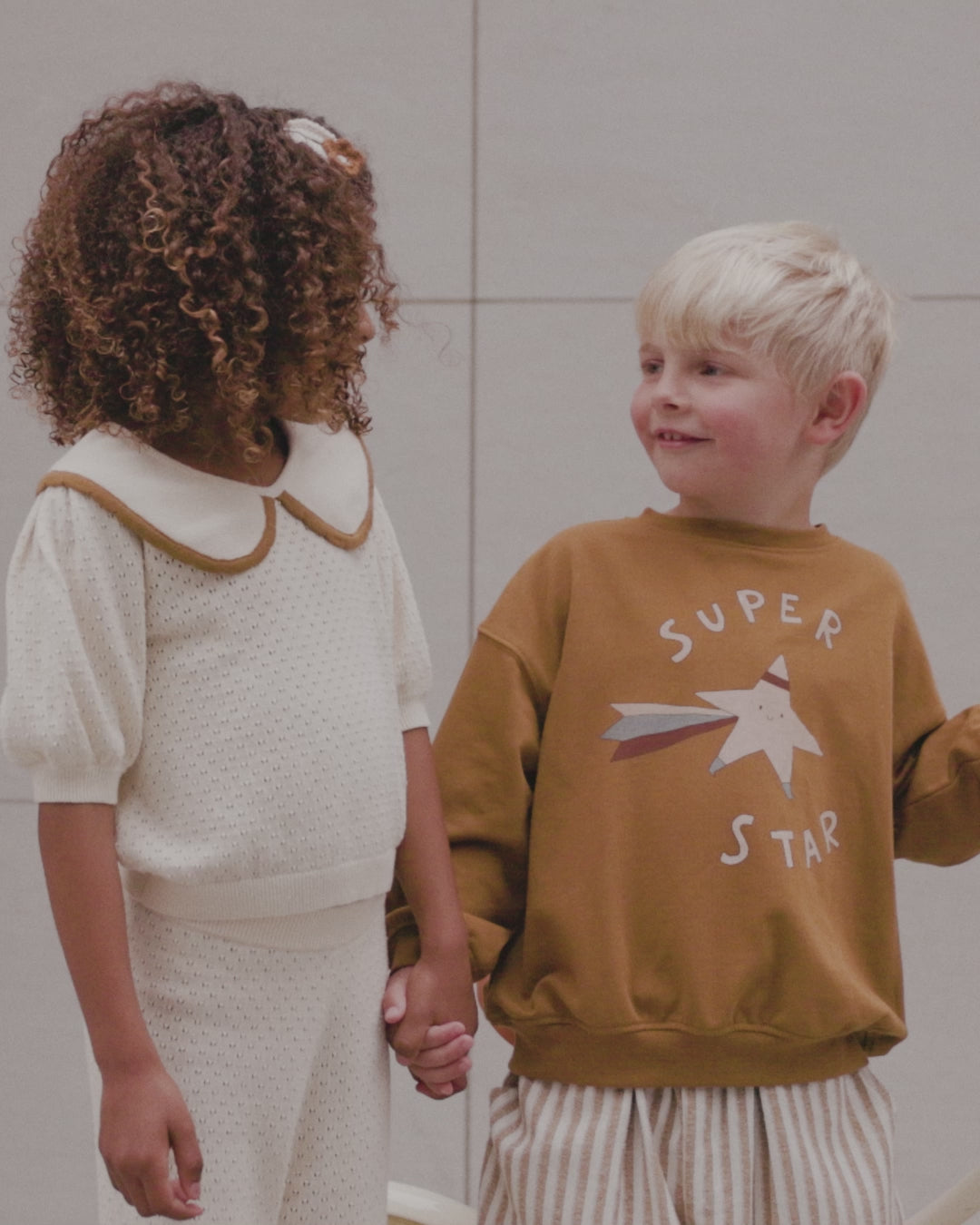Grant Recipient: Little Wishes
We are honored to name Little Wishes as the Rylee + Cru Foundation Grant Recipient for the month of November. Little Wishes is a non-profit dedicated to brightening the lives...
Read More
Rylee + Cru

Rylee + Cru

Rylee + Cru

For parents, shopping for children's clothes isn’t a leisurely activity—it’s a focused, time-sensitive task. Whether they’re preparing for a new school year, replacing outgrown essentials, or finding the perfect outfit for a birthday party, parents approach children’s apparel shopping with specific goals in mind. Efficiency is crucial, and so is accuracy. Every minute spent searching through the wrong sizes feels like time wasted, especially when they have children in tow.
Many parents shop with multiple kids in mind, each in a different stage of growth. One child might need size 3T pants while another needs size 7 tops. Add a fussy toddler, a nap schedule, or a looming dinner time to the mix, and even a quick shopping trip can turn chaotic. In these moments, a well-organized store—especially one that clearly separates and labels kids’ clothes by size—makes all the difference.
Now picture a parent at a store where sizes are mixed together on the same rack. They’re digging through a jumble of 4T, 5T, and 6x leggings, trying to find that one perfect piece that fits. It’s not just inconvenient—it’s stressful. It disrupts their ability to make fast, confident decisions, often leading them to abandon their search altogether or leave with fewer items than they intended to buy.
And for parents already balancing work, home, and family responsibilities, these frustrations add up. A poor in-store experience can mean they won’t return. On the flip side, when retailers organize kids' clothing by size, they signal that they understand and respect parents’ time—and that builds loyalty.
Ultimately, parents aren’t browsing for fun. They’re shopping with purpose, and stores that prioritize thoughtful, size-based organization help them succeed—fast.

1. Faster, Easier Shopping. Parents are often shopping on a tight schedule—whether during lunch breaks, after school pick-up, or between errands. When kids' clothes are neatly arranged by size, it eliminates guesswork and unnecessary searching. This streamlined setup allows parents to quickly locate what they need, making the shopping experience faster and far less stressful.
2. Improved Fit Confidence. Different brands can vary significantly in sizing, which makes selecting the right piece challenging. When clothes are organized by size, parents can easily hold up or compare several items within the same size range to gauge differences in cut, fit, or fabric. This makes it easier to purchase with confidence, reducing returns and increasing satisfaction.
3. Better for Shopping Multiple Ages. Families with more than one child often juggle clothing needs across several age groups and sizes. With a clearly organized size system, parents can efficiently move between size sections without wasting time searching through irrelevant items. This thoughtful layout supports multitasking and helps families shop for everyone in a single visit.
4. Reduced Clutter and Confusion. Disorganized racks filled with mixed sizes can quickly become messy and overwhelming for shoppers. A size-based system keeps merchandise in its proper place, making displays visually cleaner and easier to browse. It also helps store staff maintain tidiness throughout the day, leading to a consistently pleasant shopping environment.
5. Enhanced Customer Satisfaction and Loyalty. Parents remember stores that make shopping easier, especially when they’re managing kids at the same time. When they can trust that they’ll quickly find the right size, they're more likely to return and recommend the store to others. This simple, parent-friendly approach builds brand loyalty and increases the chances of repeat business.

Let’s be honest—children’s apparel shopping can feel more like a mission than a leisurely outing. Parents walk into stores with good intentions, but the experience can quickly spiral into stress when faced with disorganized racks, impatient little ones, or overwhelming choices. What should be a quick stop for new clothes can easily turn into an hour-long ordeal.
One of the biggest challenges parents face is planning around unpredictable growth spurts. A child who wore 4T just a few months ago might suddenly need a 5T or even a 6. This makes it difficult to plan ahead and forces parents to recheck sizes often, especially during seasonal transitions or back-to-school periods.
Add to that the confusing inconsistencies between clothing brands. A size 6 in one brand may fit like a 5 in another, making in-store comparisons essential. When clothes are not grouped by size, parents can’t easily evaluate which fit or style will work best for their child—leading to trial and error, returns, and wasted time.
And of course, shopping with kids is rarely peaceful. From tantrums and diaper changes to sibling arguments and snack emergencies, parents are constantly multitasking under pressure. The last thing they need is to sift through a sea of mismatched sizes or wander around the store searching for help.
By organizing kids’ clothes by size, retailers can dramatically reduce the time, effort, and mental energy required to shop. Parents can confidently walk in, head straight to the correct size section, and find what they need quickly—sometimes before a meltdown even has a chance to start. It’s a small but powerful way to create a smoother, more enjoyable shopping experience that parents will remember—and return to.
Our Team is constantly working to make clothing beautiful and the world a better place at the same time.